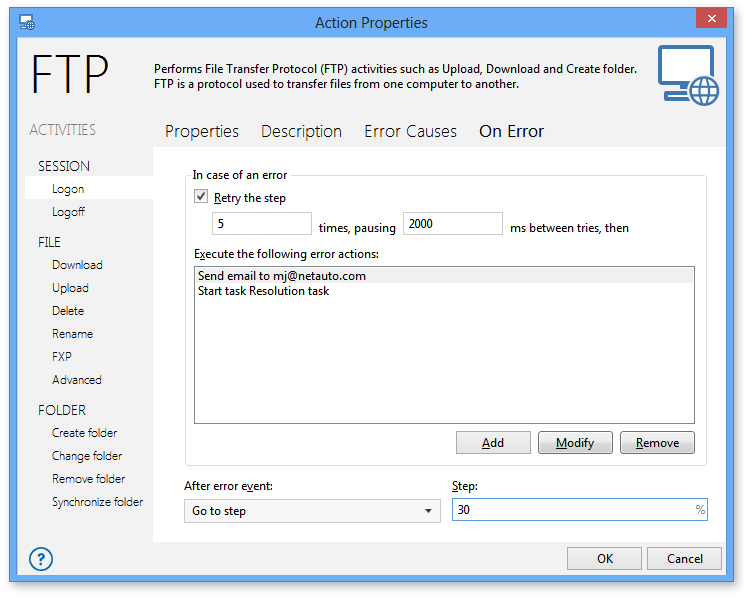Error Handling
A three-tiered approach to error handling provides a variety of methods in which to troubleshoot problematic tasks as well as supply alternative techniques to allow a task to recover gracefully from unexpected errors. Error handling can be set via the step, task and system level. The flow of error handling takes precedence from step to task to system. For instance, if an error occurs during task execution, first adheres to any exception handling parameters set for the step that caused the error (if any), followed by error handling set for the task level, and conclusively, any system wide error handling parameters.
Step Level Error Handling
Step level error handling handles task exceptions on a per step basis. Normally, any failure of a step within a task causes a step error. What causes a step to fail is, however, dependent on the step and its parameters. These parameters can be adjusted under the Error Causes tab of any step (as shown below). For additional details, see Error Causes.

If a step fails, the user can select from a number of actions to be carried out. These actions are located in the On Error tab of any specific step (as shown below). For additional details, see On Error.
